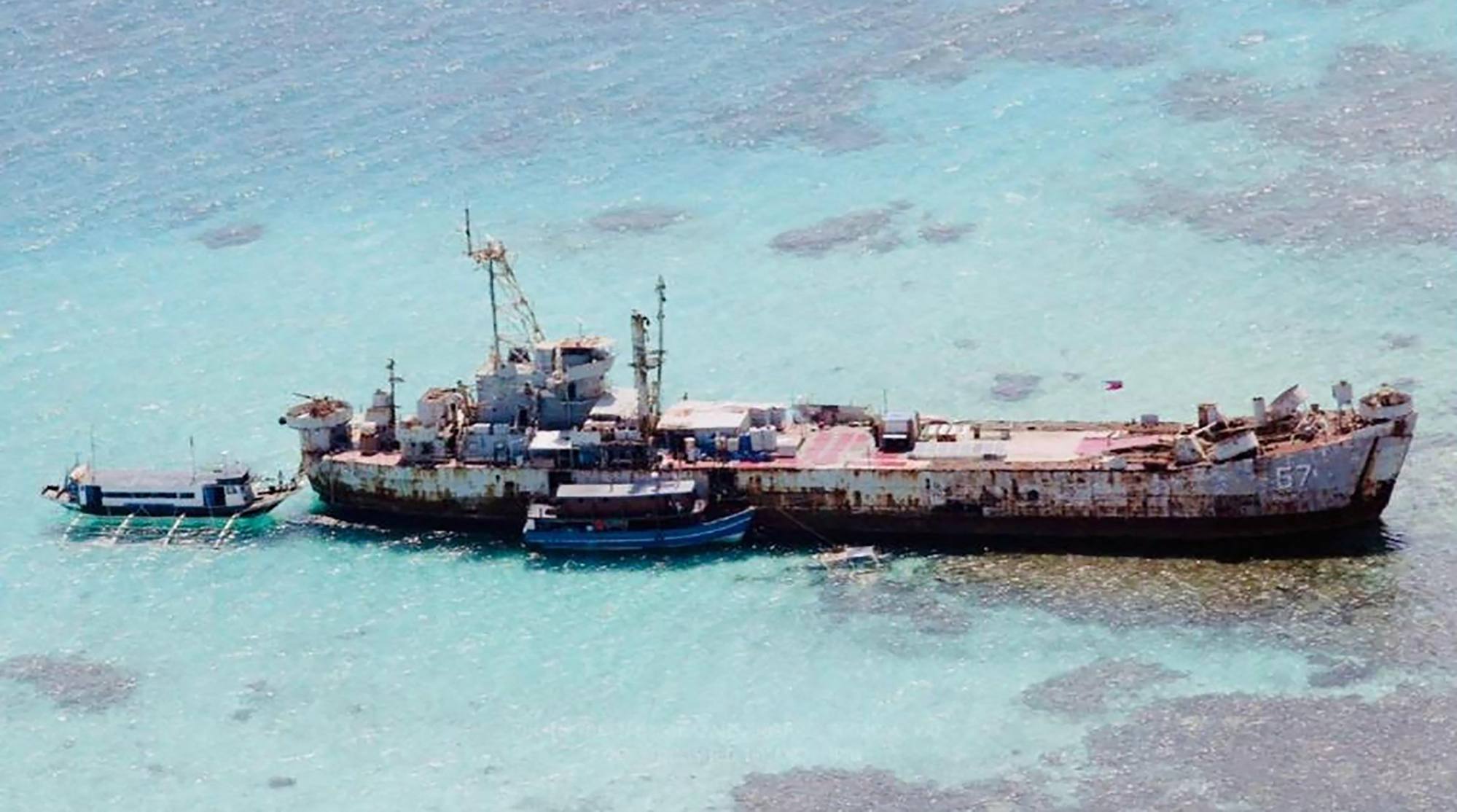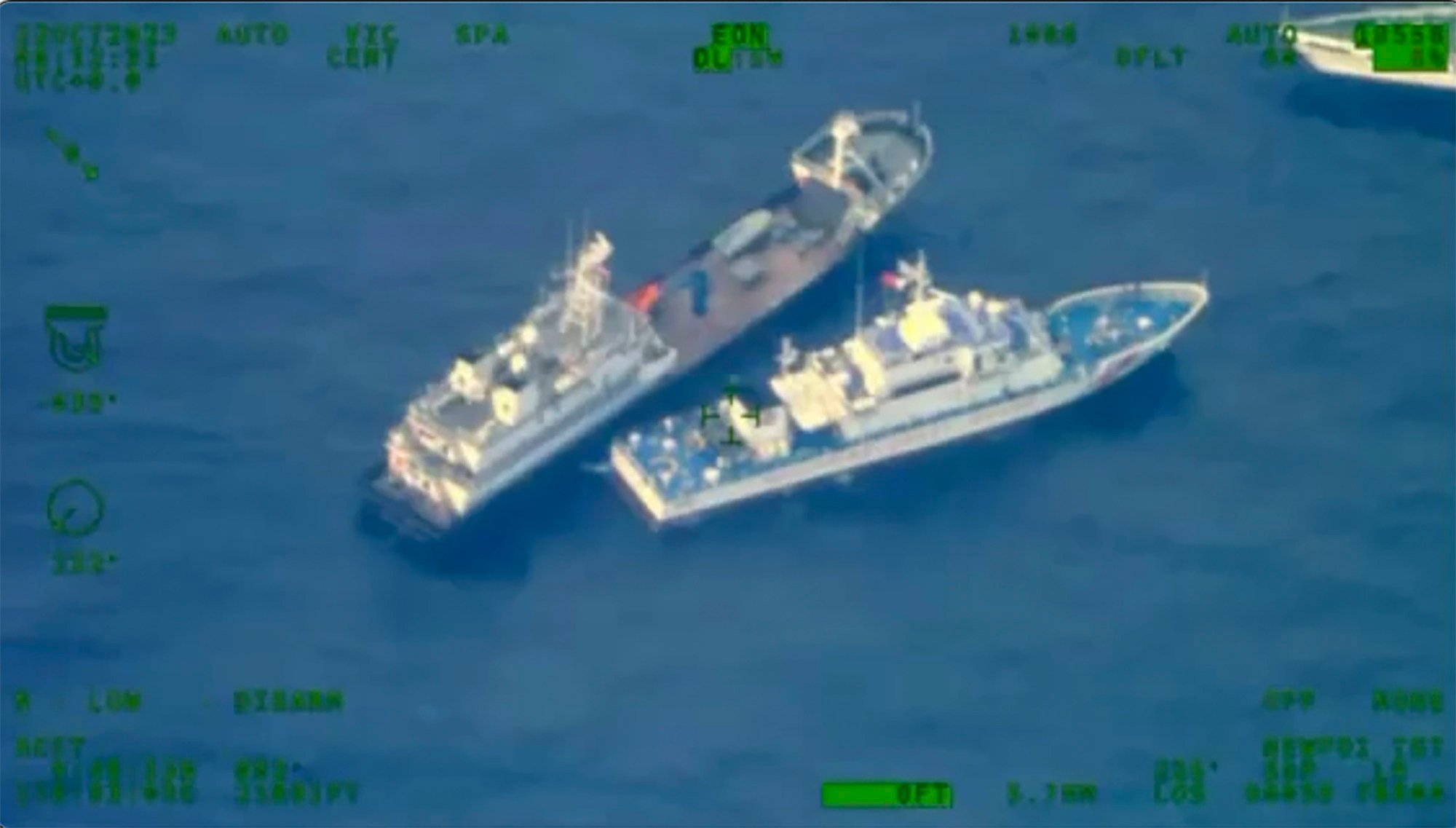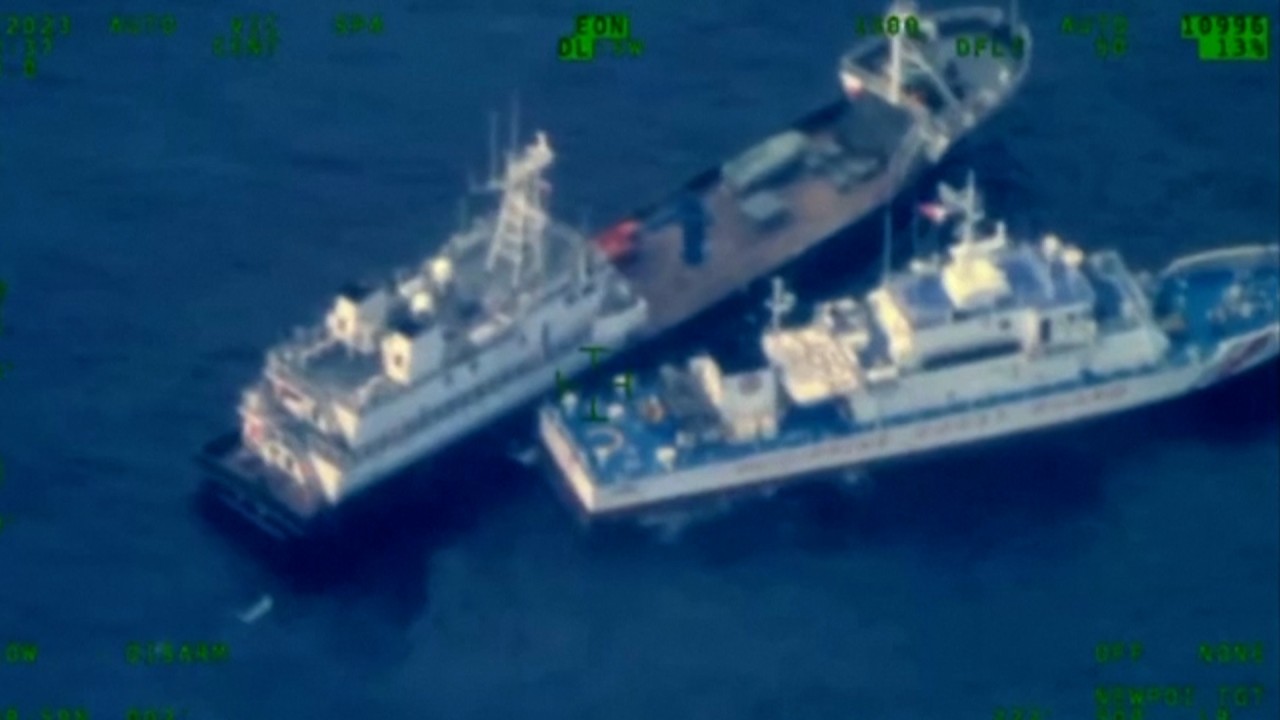
China, Philippines war of words over South China Sea collisions is a ‘test’ raising risk of hot conflict, observer says
- Both sides have lodged diplomatic protests over Sunday’s twin collisions, with China alleging provocation and Manila claiming an intentional strike
- Face-off could damage trust and affect ongoing South China Sea code of conduct talks, researcher at National Institute for South China Sea Studies warns
Chinese foreign ministry spokeswoman Mao Ning on Monday accused the Philippines of provocation “by repeatedly intruding into the Renai Jiao and continuing to spread disinformation”.
The incidents could represent a tipping point for ties between Beijing and the United States’ oldest ally in Asia, warned Ding Duo, an associate research fellow at the National Institute for South China Sea Studies.
The Philippine defence minister earlier accused the Chinese coastguard of having “harassed and intentionally hit” its resupply ship and a Philippine Coast Guard vessel.
“We are here to really decry in the strongest possible terms this egregious violation and illegal act within the [Philippines’] 200 nautical mile (370km) exclusive economic zone and the obfuscation of the truth by China’s distorting the story to fit its own ends,” Gilbert Teodoro said in Manila on Monday.
While China has dismissed the encounter as a “slight collision”, Philippine Coast Guard Commodore Jay Tarriela said on Monday that the damage to the resupply ship amounted to “more than a scratch”.
Philippines hits out at Chinese military after fresh South China Sea near miss
Beijing claims “indisputable sovereignty” over the Second Thomas Shoal, which has become the latest flashpoint in the resource-rich waterway, with frequent run-ins between Chinese and Philippine boats in recent months.
China has repeatedly blocked the Philippines from resupplying construction materials to the shoal, where Manila has kept a rusty World War II-era ship since 1999 to stake its claims to the waters.
No injuries were reported in the collisions on Sunday, but it was the first time in recent years that physical clashes had taken place, putting the dispute under the spotlight.

Ding at the South China Sea studies institute, in China’s southern Hainan province, warned of the impact on bilateral ties.
“Over the past years, the two sides have managed to control their differences well, so there is an unspoken agreement on how to deal with the disputes at sea,” he said. “But now, such agreements have been broken.”
Ding said the face-off could damage bilateral trust and affect the ongoing and long-awaited code of conduct talks.
“There would be less frankness in the negotiations.”
The South China Sea is a busy trade route crucial to countries in Southeast and East Asia, and an escalation there would raise the risks of drawing in the United States, a treaty ally of the Philippines for more than 70 years.
Under their 1951 Mutual Defence Treaty, the US is obliged to defend the Philippines if its forces, ships and aircraft come under armed attack, including “those of its coastguard – anywhere in the South China Sea”.
South China Sea: Asean to hold first joint military drills amid China tensions
The commitment was reaffirmed in a statement released by the US State Department after the collisions on Sunday.
The same day, the US also conducted its first-ever trilateral aerial exercise with Japan and South Korea, in response to evolving North Korean nuclear threats.
However, “it remains to be seen how much the US would like to see a conflict between China and the Philippines to go out of control”, Ding said.

While coastguard vessels of both sides were involved in the incident, no direct conflict had taken place between them. It was a sign that both sides had sought to avoid the crisis spiralling out of control, Ding said.
But the risk of conflict remained high, he added, as the Philippines has said it will continue its resupply missions, and Beijing will not back down.
In an unusual move, China issued a quick statement after Sunday’s first encounter. And soon after the second collision took place, it released two videos, purportedly taken from a coastguard vessel and a drone.
The Philippines, meanwhile, brought along a group of journalists on a coastguard ship, in an apparent attempt to put public pressure on China.
“This is a test for both sides,” Ding said.


